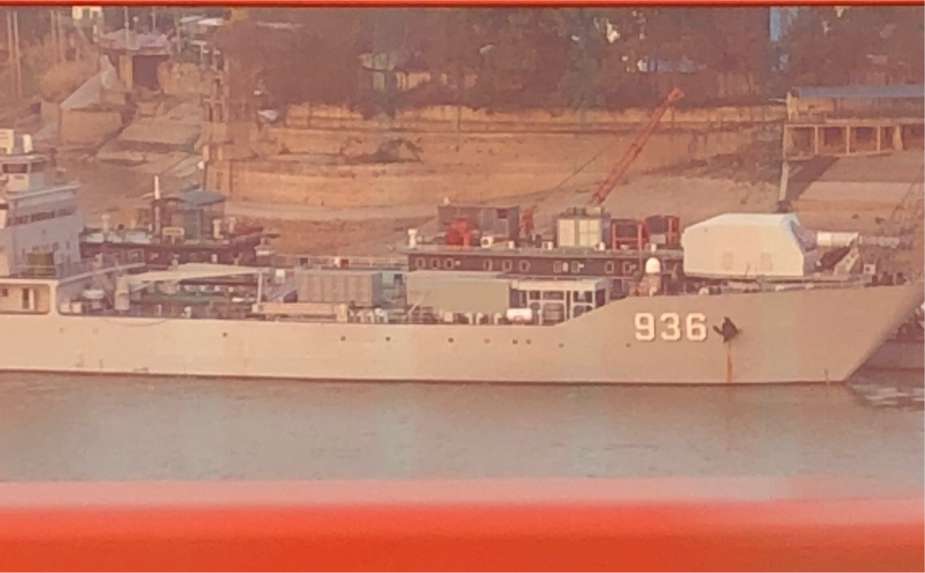According to information published by the South China Morning Post on August 28, 2023, China's long-quiet electromagnetic railgun project has made remarkable strides.
Follow Navy Recognition on Google News at this link
 Chinese landing ship Haiyang Shan. (Picture source: AndrewTear)
Chinese landing ship Haiyang Shan. (Picture source: AndrewTear)
The Chinese Navy is currently testing what is touted as the most powerful electromagnetic weapon system on the planet. Recent tests saw a heavy projectile accelerated to a speed of 700 km/hour, with the projectile weighing an impressive 124 kilograms.
To put this into perspective, the U.S.'s prior 120mm railgun project only managed to launch an 18-kilogram projectile. The weight of China's launched projectile is equivalent to three 155mm shells, reaching an initial velocity of 190 meters per second. When lighter projectiles are used, the initial speed of China's railgun rounds could easily surpass the speed of sound, or 340 meters/second.
In August, renowned Chinese naval propulsion and electrical engineering expert, Major General Ma Weiming, along with his team, published a paper in the Journal of Electrical Engineering Technology titled "Current Status and Challenges in Electromagnetic Launch Technology."
The paper officially announces that the Naval University of Engineering has overcome challenges like designing high magnetic density coils and developing compact pulse power supply technologies. Currently, the team is developing high-Mach electromagnetic coil launch technology.
This indicates China is in the process of developing an electromagnetic coil gun capable of initial speeds of 1000 meters/second, or three times the speed of sound, outpacing the speed of bullets. Such a weapon would have an effective range exceeding 100 kilometers and possess formidable beyond-visual-range strike capabilities.
It's essential to clarify that the electromagnetic railgun Ma Weiming's team is developing is referred to as an "electromagnetic coil gun." This term usually denotes a weapon that uses the magnetic field generated by a current in a coil to accelerate a projectile.
It's a hybrid between traditional artillery and electromagnetic acceleration technology. The magnetic field created when current passes through the coil exerts force on the projectile, causing its acceleration. This mechanism parallels traditional artillery but replaces explosive propellants with electromagnetic force.
Electromagnetic coil guns are a subset of railguns, a broader concept that can utilize various technologies, including electromagnetic coils and rail systems, to achieve high-speed launches.
Electromagnetic coil guns offer superior trajectory control, allowing for high-precision strikes. Adjusting the coil's current ensures accurate trajectory control, thereby increasing hit rates.
Furthermore, since coil guns eliminate the need for traditional explosive propellants, they can achieve rapid consecutive firing, outperforming traditional large-caliber artillery in output speed.
They exhibit immense potential, especially in anti-aircraft and missile defense operations. Conceptually, future railguns could potentially reach initial speeds as high as Mach 10.29 (3500 meters/second), comparable to hypersonic missiles.
Such weapons, with their unmatched initial speed, range, and firing rate, are poised to change the future of warfare, likely seeing deployment on naval and land platforms. They will specialize in intercepting enemy aircraft and various mid-to-long-range missiles.
From a cost perspective, railguns have a distinct advantage over traditional artillery shells. For instance, the subsidy price for a conventional 155mm shell produced for Ukraine by the European Union last year was several thousand euros, while the cost of a railgun projectile is only a few dollars. Relying on electric energy for propulsion further reduces launch costs.



